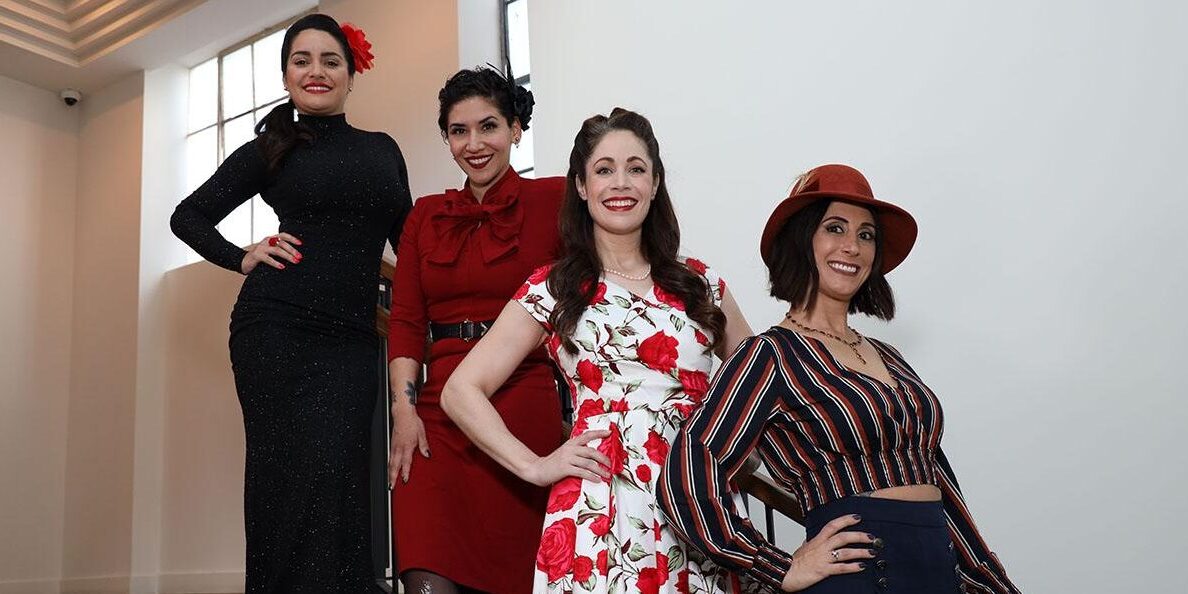By Linsay Rousseau (first from right), one of the invitees from Pinups for Vets, a non-profit organization, who attended the PRSA-LA State of the State of PR event on March 29, 2022.
What do you think of when you hear US military and media? Censorship? Good morning, Vietnam? Ernie Pyle? I’m guessing most of you have probably never dealt with a military public affairs office, nor might ever need to, but it’s certainly a challenge. But as with any complex situation, such as a new partner or a media outlet, there are some shared lessons to learn about how to approach them appropriately and build a relationship. Here are five communications learnings based on my experiences as a public affairs sergeant and combat photographer for the 1st Brigade Combat Team, 101st Airborne Division, deployed to Iraq for a year from 2005-2006.
First, there is always a chain of command. Try to understand it. The first thing a civilian needs to understand about the military is that there is a chain of command and every soldier (sailor, airman, marine, coastie) has an MOS (a job specialty). Media need to make sure they’re approaching the right person and that will more often or not be the public affairs office. As any good journalist should, do your research in advance. Know who you want to talk to and why. Don’t just show up and say, “tell me about the war.” Do you want to speak to the general to get an overall view of operations (and are you a big enough media outlet to warrant such a request) or do you want to talk to a medic about the challenges of providing medical care in the field? Learn what rank means. It shows you know what you’re talking about if you call someone captain, lieutenant, or sergeant (below sergeant, feel free to call them by their name). It’s the little things that matter.
Second, learn to speak their language. Known in the Army infantry as grunts (or the equivalent in other branches) your average service member may be very helpful to you. But you will need to speak their language. Talk to them like a friend. Be casual. Don’t patronize them. Don’t try to flirt or use sex appeal to try and influence them. You think I’m joking, but it happened and trust me, it didn’t go over well. Don’t ask them something you know they can’t answer. If they listened to any of my briefings, they won’t say “No comment” if they don’t know something, they’ll say it’s outside their area of expertise and refer you up the chain of command.
Third, inform with accuracy, but don’t jeopardize the situation. When working with media, we had to ensure they didn’t take pictures of things that could jeopardize operational security (ie, equipment, injured or dead soldiers who can be identified before the families have been notified). Radios had turned down so they couldn’t record the audio. Again, we wanted accurate information getting out there, but without jeopardizing lives.
Fourth, don’t make assumptions. Not every service member is uber patriotic and gun loving. Some are just trying to make a living, support a family, avoid jail, get out of an abusive relationship, get health insurance, or pay for an education, and the military was the only way they felt they could do this. Many have gone on to be active in the anti-war movement, support BLM groups and defend LGBTQIA rights. Don’t believe me? Check out Continue to Serve, VoteVets, Veterans for Common Sense and Iraq and Afghanistan Vets Against the War.
Fifth, work to build relationships. Some military may be conditioned to be antagonistic to the media because of past negative experiences, but you can work to build a relationship. Show them you’re a person, you’ve done your research and respect what they do. You’re not there to try and make them look bad. We had one journalist embedded for six months who became part of the family and everyone loved her. Listen to their stories. Learn who they are. Put a face on the stories being
reported. And if you don’t understand or know, ask. Don’t just assume.
Linsay Rousseau is an Army Veteran and Public Affairs Sergeant and Combat Camera. From 2004-2007, Linsay served as a public affairs sergeant and combat photographer for the U.S. Army’s 1st Brigade Combat Team, 101st Airborne Division (Air Assault), working as a journalist, photographer and videographer. She spent a year in the northern Iraq province of Kirkuk documenting and reporting on combat and humanitarian operations.







